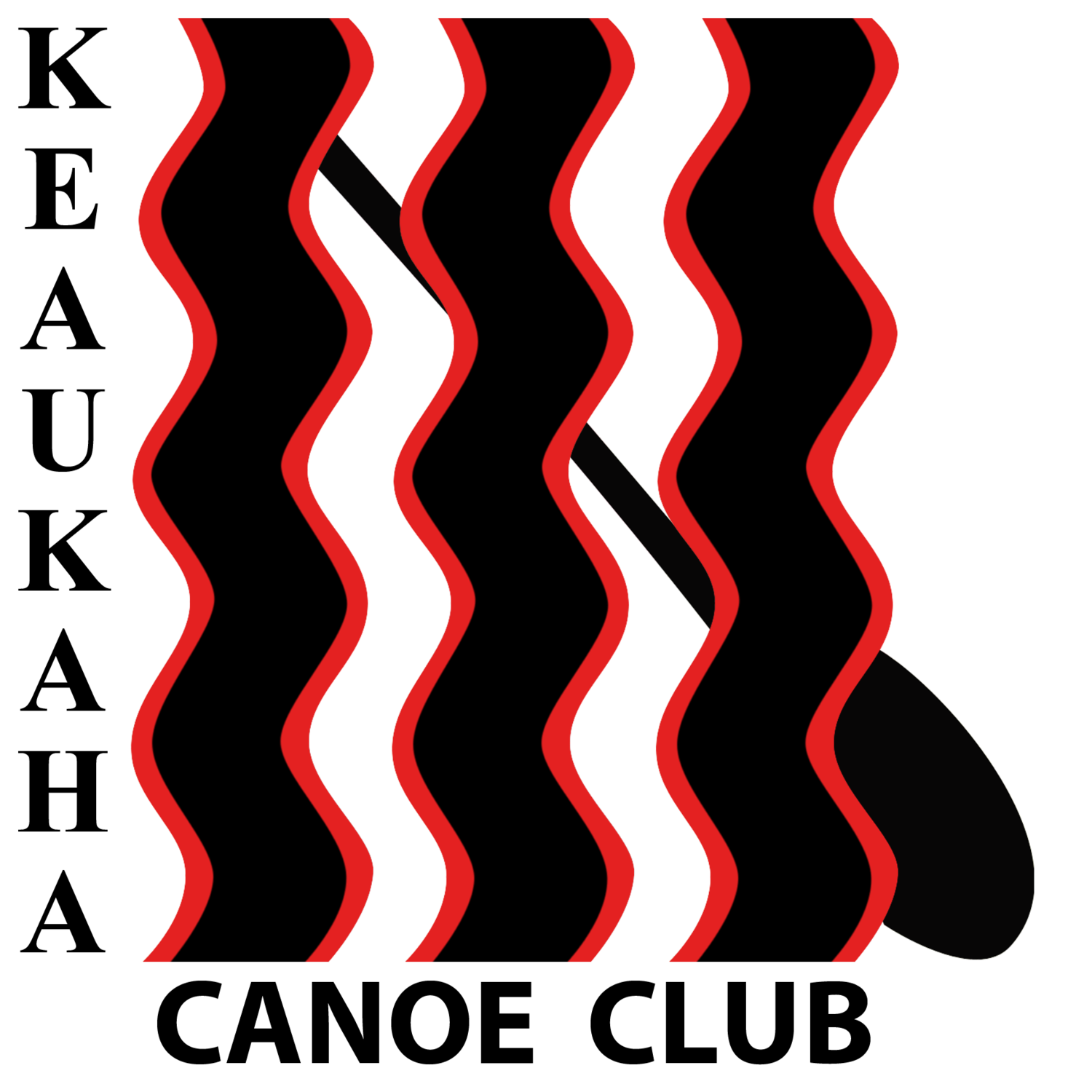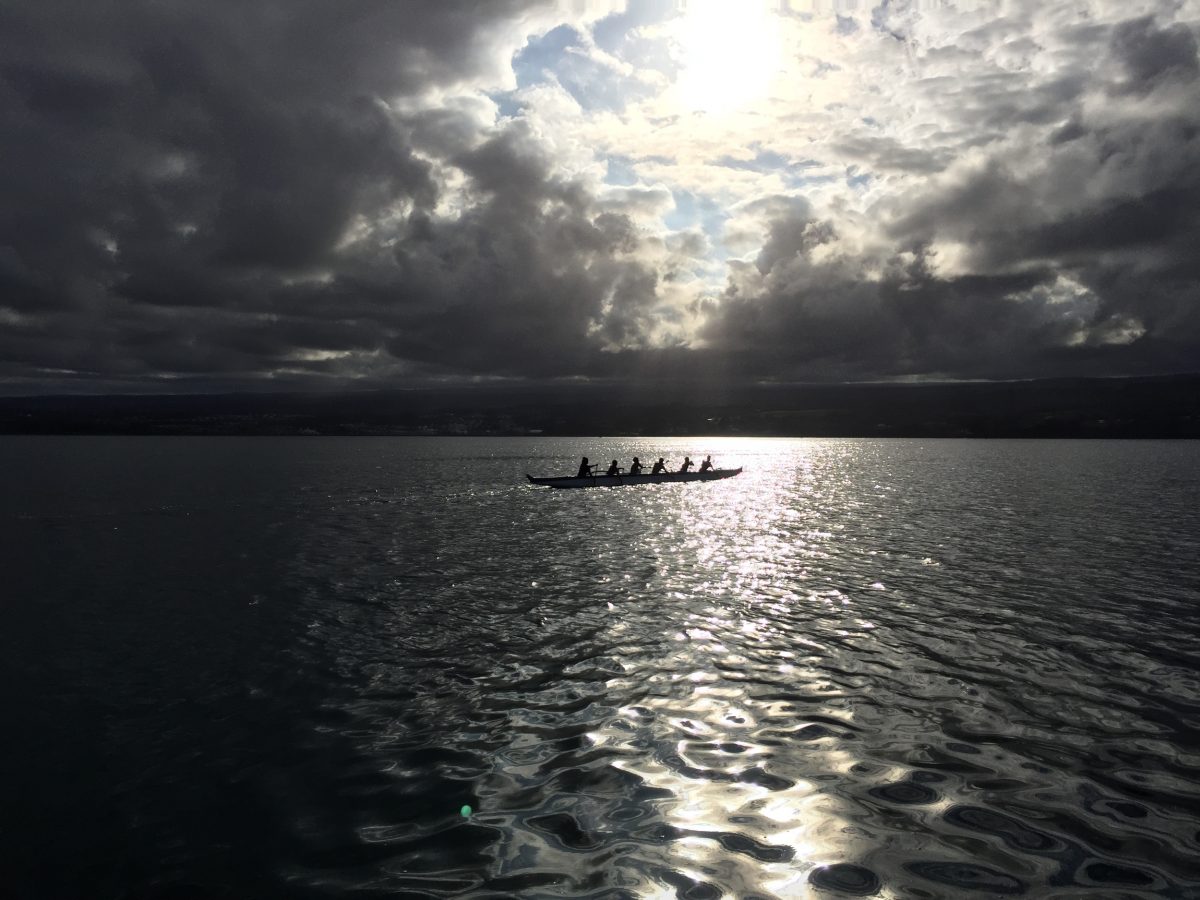Located on the Big Island of Hawai’i, KCC is one of the oldest clubs in Hilo.
Board Members consist of the following:
- President- Keahi Warfield
- Vice President- David Lipp
- Permit/Licensing- David Lipp
- Technology- Jonathan Yung
- OC1 Manager- Faelyn Jardine, Momi Lyman
- Jersey/Awards- Tom Osorio
- Finance/Publicity- Shelly Toledo
- Registration/Secretary- Anna Kaaua, Mari Giel
- Legal- Lloyd Van De Car
- Keaukaha Advisory Council- Pat Kahawaiolaa, Luana Kawelu, Gilbert Fallau
- Fundraising- Lani Kaluhiwa
The Keaukaha Canoe Club logo was designed by Jacob Ah Chin Yung and implemented in 2008 at a pivotal point in the refocusing of the vision of KCC as a kids club. Keaukaha Canoe Club was established by kupuna from Keaukaha to promote the rich heritage of Hawaiian canoe racing especially for the youth and community from that area. Since its inception, the club has had many logos that represented the club for that place in time and this new logo does not replace the older ones. It serves as a reminder to members of the club that Keaukaha is a living and thriving native Hawaiian community and that what we do as a club reflects the Keaukaha community.
The name Keaukaha may have different interpretations as to its meaning depending on who you ask. When broken down into the various words “au” and “kaha,” au- refers to time, place or even current; kaha- refers to writing, striping of certain fish, or even to cut. In a historical oral history project taken by students at Keaukaha elementary interviewing kupuna in the early 70’s, a book Ku’u Home O Keaukaha was published by Rhea Akoi. Within this resource, kupuna speak about how “keau” was a variety of potato not very pleasurable to the palate but eaten in times of famine. Therefore, the meaning of Keaukaha can be defined as: a time of writing, the cutting currents which are prevalent in its waters and also the potato that was eaten during times of famine.
The design represents the three meanings that Keaukaha is associated with. Not only does it speak to these meanings but especially to the cutting currents that exists in its waters. Paddlers as well as fisherman who utilize the ocean for sustainable resource or play are very familiar with the locations of these changing currents occurring at ‘Auwill, Laehala and Leleiwi. The hoe represents the cultural practice that we are perpetuating having the ability to cut through the currents or challenges of the ever changing times. The number 3 is also an important number to the holy trinity of Makua, Ke Keiki a me Ka Uhane Hemolele. The number 3 also occurs in the number of wives that the famous chief Leleiwi of this area known as Keaukaha had in ancient times in which the perpetual names of Keonepupu, Laieikawai and Lehia exist to this very day.

